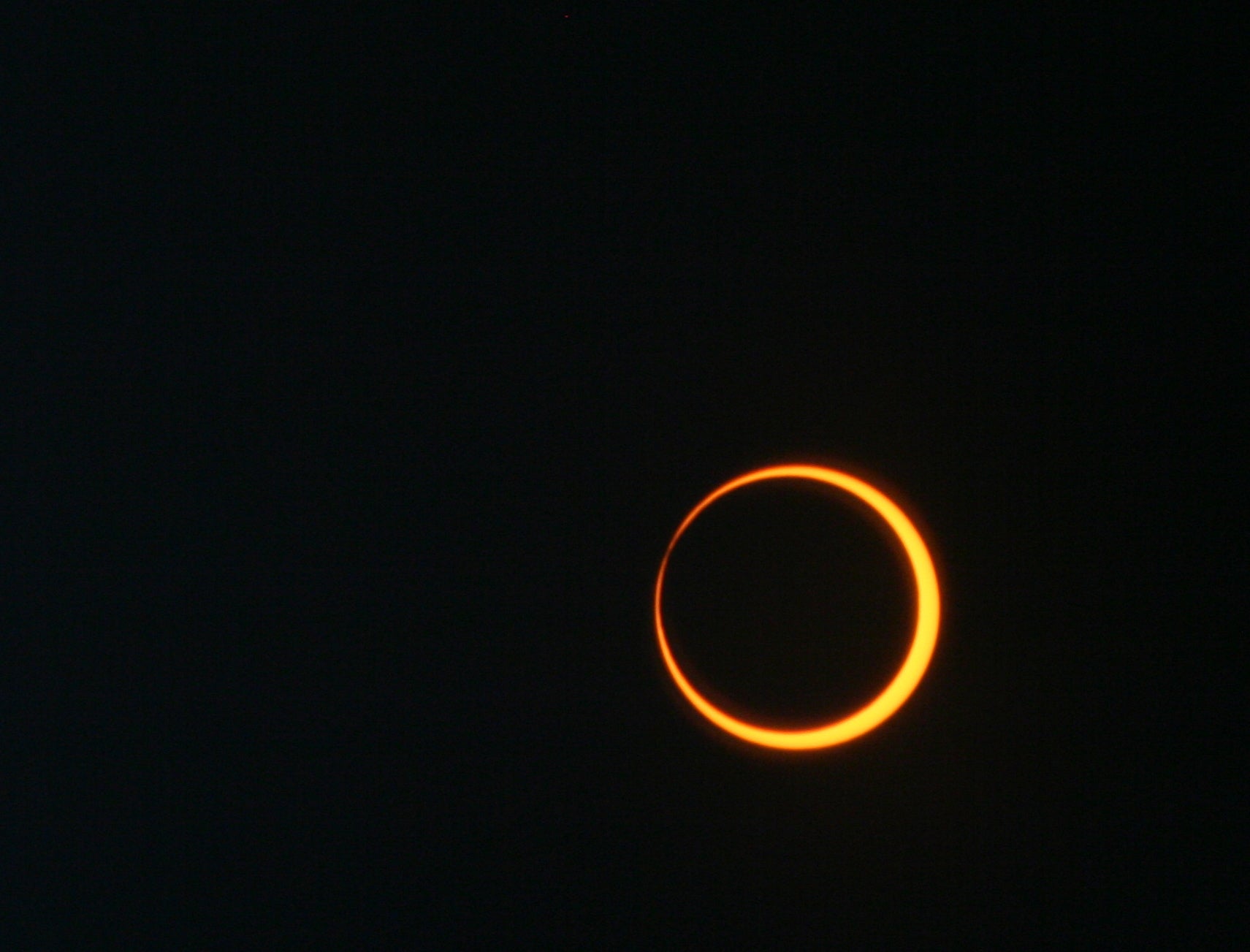Let's talk about annular eclipses. You know, those cool celestial events where the moon seems to turn into a thin ring? Grab your metaphorical sunglasses, and let's dive in!
Sun, Moon, and Earth – A Celestial Dance
At its core, any solar eclipse, whether it’s total, partial, or annular, happens because of a dance between the Earth, the Moon, and the Sun. When the Moon slips between the Earth and the Sun, it casts a shadow on our planet. This is when the magic happens, and we get to witness a solar eclipse.
Total Eclipse vs. Annular Eclipse: What’s the Difference?
Now, you might wonder, “If it’s all about the Moon getting in the way of the Sun, then why aren’t all solar eclipses the same?” Great question!
The Moon’s orbit around the Earth isn’t a perfect circle—it's slightly elliptical. This means that the Moon's distance from the Earth isn’t constant. Sometimes it’s closer, and we call this "perigee." Other times it's farther away, known as "apogee."
A total solar eclipse occurs when the Moon is close enough to the Earth (around its perigee) that it can completely cover the Sun’s disk. The sky goes dark in the middle of the day, and it's like a momentary nighttime. Super eerie, right?
On the flip side, an *annular eclipse* occurs when the Moon is too far away (near its apogee) to cover the Sun entirely. Instead of the full blackout experience of a total eclipse, we see a ring (or annulus) of sunlight around the Moon. It's like the Sun is wearing a bright, shiny ring!
Why Not Just Call It a ‘Ring Eclipse’?
You know, "ring eclipse" would make a lot of sense! But the term "annular" comes from the Latin word "annulus," which means ring. So, in a roundabout way, we kinda are calling it a ring eclipse!
Chasing the Shadow: Path of Annularity
Here's another cool tidbit: Not everyone gets a front-row seat to this show. Only folks standing in a specific path, known as the "path of annularity," will see the complete ring. If you're slightly outside this path, you'll only see a partial eclipse. This path is basically where the Moon’s shadow, or more specifically, the antumbral shadow, passes over the Earth. So, to get the best view, you'd have to be in the right place at the right time.
Why Don't We See Eclipses Every Month?
Good one! You’d think that since the Moon orbits the Earth roughly once a month, we should have a solar eclipse every new moon, right? Well, the Moon's orbit is tilted about 5 degrees relative to Earth's orbit around the Sun. This means most of the time, the Moon's shadow either goes above or below Earth. The points where the Moon’s orbit crosses the Earth’s orbit are called "nodes." An eclipse can only happen when the Moon is near one of these nodes AND is in the new moon phase. These conditions make eclipses relatively rare, happening only a few times a year.
Annular vs. Total Eclipses: A Numbers Game
Total solar eclipses are more common than annular ones, but annular eclipses cover a larger area on Earth. This is because, while the moon's umbral shadow (that's the central part that causes a total eclipse) is smaller when it's farther from Earth, the antumbral shadow (the one that causes the annular eclipse) can cover a broader swath of our planet. So, even though total eclipses might be more famous, those flashy annular ones still get their fair share of attention!
Safety First!
Before I forget, always remember that looking directly at the Sun is dangerous, even during an eclipse. The intense sunlight can damage your eyes. If you ever want to witness an annular eclipse, or any solar eclipse for that matter, use special eclipse glasses or indirect viewing methods. Safety first!
Wrap Up
So, there you have it! An annular eclipse is basically the universe’s way of saying, “Hey, check out this cool ring I can make!” It's all about the distances and sizes of the Sun, Moon, and Earth, combined with the Moon’s elliptical orbit and the tilt of its path. So next time you hear someone talking about an annular eclipse, you can impress them with your newfound knowledge!
Hope you found this chat enlightening (pun intended)! Stay curious and keep looking up!



Share:
Celestial Shows: What Causes Total Eclipses
The Superstitious History of Eclipses